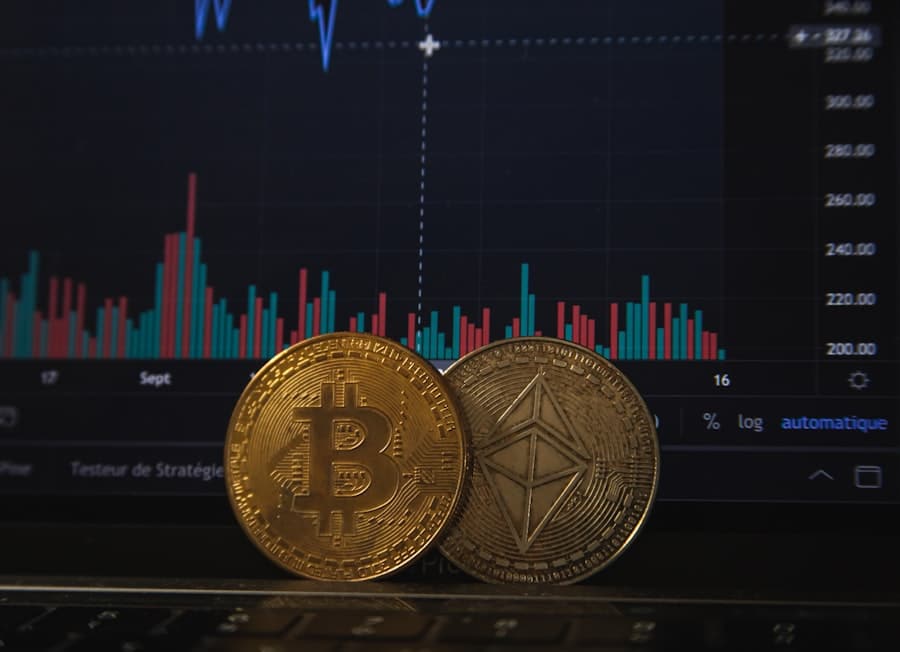Blockchain technology has emerged as a revolutionary force in the digital landscape, fundamentally altering how data is stored, shared, and secured. At its core, a blockchain is a decentralized ledger that records transactions across multiple computers in such a way that the registered transactions cannot be altered retroactively. This characteristic of immutability, combined with transparency and security, makes blockchain an attractive solution for various industries, including finance, supply chain management, and healthcare.
The technology operates on a peer-to-peer network, where each participant has access to the entire database, ensuring that no single entity has control over the entire system. This decentralization not only enhances security but also fosters trust among users, as every transaction is verifiable by all parties involved. The potential applications of blockchain extend far beyond cryptocurrencies like Bitcoin and Ethereum.
One of the most promising areas is intellectual property (IP) rights, where the need for secure and transparent systems is paramount. Intellectual property encompasses a range of legal rights that protect creations of the mind, including inventions, literary and artistic works, designs, symbols, names, and images used in commerce. As the digital economy continues to expand, the challenges associated with protecting these rights have become increasingly complex.
Blockchain technology offers innovative solutions to these challenges by providing a secure framework for registering, tracking, and enforcing intellectual property rights.
Key Takeaways
- Blockchain technology is a decentralized and secure way of recording transactions and data, making it ideal for protecting intellectual property rights.
- Intellectual property rights include patents, trademarks, copyrights, and trade secrets, which are essential for protecting the creations and innovations of individuals and businesses.
- Challenges in protecting intellectual property rights include issues with piracy, counterfeiting, and the difficulty of proving ownership and originality.
- Blockchain technology can safeguard intellectual property rights by providing a transparent and immutable record of ownership and transactions, reducing the risk of infringement and theft.
- Smart contracts, which are self-executing contracts with the terms directly written into code, can automate and enforce intellectual property rights, providing a more efficient and reliable way of managing and protecting IP.
Understanding Intellectual Property Rights
Intellectual property rights are legal protections granted to creators and inventors to safeguard their original works and inventions from unauthorized use or reproduction. These rights are crucial for fostering innovation and creativity, as they provide creators with the exclusive right to benefit from their work for a specified period. The primary categories of intellectual property include patents, copyrights, trademarks, and trade secrets.
Each category serves a distinct purpose: patents protect inventions and processes; copyrights safeguard artistic and literary works; trademarks protect brand names and logos; and trade secrets cover confidential business information. The significance of intellectual property rights cannot be overstated. They incentivize innovation by ensuring that creators can reap the financial rewards of their efforts.
For instance, a musician who writes a song can earn royalties from its sales and performances, while an inventor can secure a patent to prevent others from making or selling their invention without permission. However, the enforcement of these rights often presents challenges, particularly in the digital age where copying and distributing content has become easier than ever. As a result, understanding the nuances of intellectual property rights is essential for creators and businesses alike to navigate the complexities of protecting their innovations.
Challenges in Protecting Intellectual Property Rights

Despite the importance of intellectual property rights, protecting them poses significant challenges in today’s interconnected world. One of the most pressing issues is the ease with which digital content can be copied and distributed online. For example, music files can be shared through peer-to-peer networks or streaming services without proper licensing, leading to substantial revenue losses for artists and record labels.
Similarly, software piracy remains a persistent problem, with unauthorized copies of software being distributed widely across the internet. These challenges are exacerbated by the global nature of the internet, where jurisdictional issues complicate enforcement efforts. Another challenge lies in the lack of awareness and understanding of intellectual property rights among creators and consumers.
Many individuals may not fully grasp the importance of protecting their work or may inadvertently infringe on others’ rights due to ignorance. This lack of knowledge can lead to unintentional violations and disputes that are costly and time-consuming to resolve. Furthermore, traditional methods of registering and enforcing intellectual property rights can be cumbersome and slow, often requiring significant legal resources that may be out of reach for smaller creators or startups.
As a result, there is an urgent need for more efficient and accessible solutions to address these challenges.
How Blockchain Technology Can Safeguard Intellectual Property Rights
Blockchain technology offers a transformative approach to safeguarding intellectual property rights by providing a secure and transparent platform for registration and enforcement. One of the key advantages of blockchain is its ability to create a tamper-proof record of ownership and transactions. When an intellectual property asset is registered on a blockchain, it is assigned a unique digital identifier that links it to its creator or owner.
This record is immutable; once it is added to the blockchain, it cannot be altered or deleted without consensus from the network participants. This feature significantly reduces the risk of disputes over ownership and helps establish clear provenance for creative works. Moreover, blockchain enables real-time tracking of intellectual property assets throughout their lifecycle.
For instance, artists can monitor how their music is being used across various platforms, ensuring they receive appropriate compensation for their work. This level of transparency not only empowers creators but also fosters trust among consumers who can verify the authenticity of the content they are engaging with. Additionally, blockchain can facilitate licensing agreements by providing a clear record of terms and conditions associated with the use of intellectual property assets.
This streamlining of processes can reduce administrative burdens and enhance compliance with licensing agreements.
The Role of Smart Contracts in Intellectual Property Rights
Smart contracts are self-executing contracts with the terms of the agreement directly written into code on the blockchain. They automatically enforce and execute contractual obligations when predetermined conditions are met. In the context of intellectual property rights, smart contracts can play a pivotal role in automating licensing agreements and royalty payments.
For example, an artist could create a smart contract that stipulates that every time their song is streamed on a platform, a certain percentage of the revenue generated will be automatically transferred to their digital wallet. This automation not only ensures timely payments but also reduces the potential for disputes over royalties. By eliminating intermediaries such as record labels or licensing agencies from the equation, smart contracts can significantly lower transaction costs and increase transparency in financial dealings related to intellectual property.
Furthermore, smart contracts can be programmed to include various conditions for usage rights, allowing creators to retain control over how their work is used while still monetizing it effectively.
Advantages of Using Blockchain for Intellectual Property Rights

The integration of blockchain technology into the realm of intellectual property rights offers numerous advantages that address existing challenges while enhancing overall efficiency. One significant benefit is enhanced security; because blockchain operates on a decentralized network, it is less vulnerable to hacking or data breaches compared to traditional centralized databases. This increased security is particularly crucial for protecting sensitive information related to intellectual property assets.
Additionally, blockchain’s transparency fosters trust among stakeholders in the creative ecosystem. Creators can confidently share their work knowing that their ownership rights are securely recorded on an immutable ledger. This transparency also extends to consumers who can verify the authenticity of products or content before making purchases or engaging with them.
Furthermore, blockchain’s ability to streamline processes through automation reduces administrative burdens associated with managing intellectual property rights, allowing creators to focus more on their craft rather than navigating complex legal frameworks.
Case Studies of Successful Implementation
Several organizations have begun leveraging blockchain technology to protect intellectual property rights successfully. One notable example is Ascribe, a platform that allows artists to register their digital works on a blockchain ledger. By doing so, artists can establish proof of ownership and track how their works are used across various platforms.
Ascribe has empowered numerous creators by providing them with tools to manage their IP rights effectively while ensuring they receive fair compensation for their work. Another compelling case study is that of Myco, which utilizes blockchain technology to protect agricultural innovations through patent management. By registering patents on a blockchain platform, Myco enables inventors to maintain clear records of ownership while facilitating easier access to licensing opportunities.
This approach not only enhances transparency but also encourages collaboration among innovators in the agricultural sector by simplifying the process of sharing knowledge and resources.
Future Implications and Potential Developments
The future implications of integrating blockchain technology into intellectual property rights are vast and promising. As more creators and businesses recognize the benefits of this technology, we can expect an increase in adoption across various industries. The potential for creating decentralized marketplaces for creative works could revolutionize how artists monetize their creations while retaining control over their IP rights.
Moreover, advancements in artificial intelligence (AI) could further enhance blockchain’s capabilities in managing intellectual property rights. For instance, AI algorithms could analyze usage patterns across different platforms to optimize royalty distribution based on actual consumption data rather than estimates.
As regulatory frameworks evolve to accommodate these technological advancements, we may also see governments adopting blockchain solutions for IP registration and enforcement processes. Such initiatives could streamline bureaucratic procedures while enhancing transparency in public records related to intellectual property rights. In conclusion, as we continue to explore the intersection between blockchain technology and intellectual property rights, it becomes increasingly clear that this innovative approach holds significant promise for addressing longstanding challenges in protecting creative works.
The combination of enhanced security, transparency, automation through smart contracts, and successful case studies demonstrates that blockchain has the potential to reshape how we think about ownership and protection in the digital age.
This innovative approach is not only transforming how intellectual property is managed but also influencing other tech domains. For instance, the advancements in digital art have been significantly impacted by blockchain technology, as it offers artists a reliable way to authenticate and protect their creations. To explore more about tools that digital artists can leverage, you might find the article on best free drawing software for digital artists in 2023 insightful. This piece delves into various software options that can complement the security and authenticity provided by blockchain, thus empowering artists in the digital age.
FAQs
What is blockchain technology?
Blockchain technology is a decentralized, distributed ledger that records transactions across many computers in such a way that the registered transactions cannot be altered retroactively.
How does blockchain support intellectual property rights?
Blockchain supports intellectual property rights by providing a secure and transparent way to record and track ownership of digital assets, such as creative works, patents, and trademarks. This helps in preventing unauthorized use and infringement of intellectual property.
What are the benefits of using blockchain for intellectual property rights?
Some benefits of using blockchain for intellectual property rights include enhanced security, transparency, and immutability of records. It also provides a decentralized and tamper-proof database for tracking and managing intellectual property assets.
Can blockchain be used to register and protect copyrights and patents?
Yes, blockchain can be used to register and protect copyrights and patents by creating a permanent and tamper-proof record of ownership and rights. This can help in proving ownership and preventing unauthorized use or infringement.
Are there any challenges in using blockchain for intellectual property rights?
Some challenges in using blockchain for intellectual property rights include the need for standardization, scalability, and interoperability with existing systems. Additionally, there may be legal and regulatory challenges in recognizing blockchain-based records for intellectual property rights.

